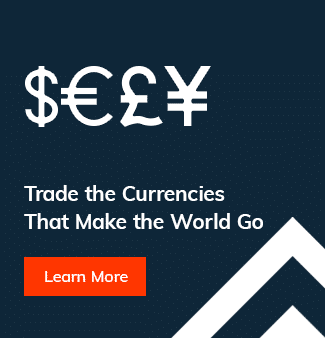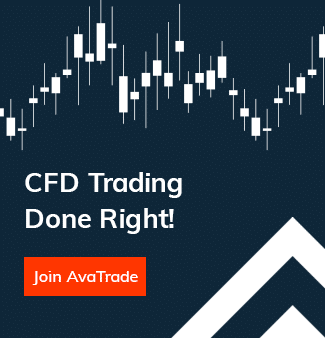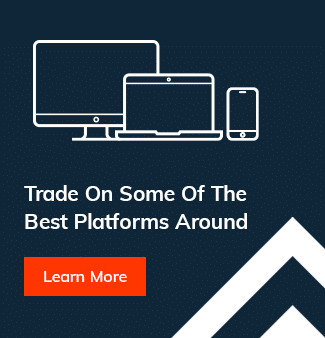Adidas Stock
| MT5/MT4 Symbol:_ADIDAS |
| Instrument:adidas |
| Country:GERMANY |
| Currency:EUR |
| Exchange:Frankfurt Stock Exchange |
| Trading Hours (GMT):08:00-16:29 |
Trade Adidas Stock
Known as ‘the three stripes company’ because of its logo, Adidas was founded in 1924 by Adolf Dassler, who was later joined by his elder brother, Rudolf. They named their company the Dassler Brothers Shoe Factory. But the brothers split in 1949, with Adolf forming Adidas and Rudolf forming a rival company, Puma. To this day, Adidas is headquartered in Herzogenaurach, Germany.
Friedberg Direct Adidas Stock Trading Information
- MT4 Symbol: _ADIDAS
- Trading Time: Monday – Friday 08:00 – 16:29 London Time GMT
- Country: Germany
- Currency: EUR
- Exchange: Frankfurt Stock Exchange
Start trading Adidas Stock CFDs with Friedberg Direct today!
After nearly going bankrupt in 1993 due to fierce competition, Adidas bounced back and held its IPO on the 17th of November 1995. It is listed on the Deutsche Börse (Frankfurt Stock Exchange) in Germany, where it trades under the ticker symbol ADS. The stock is a constituent of the DAX-30, which tracks the largest German companies listed on the stock market. Adidas is traded in the Apparel and textile Products Industry and under the Consumer Discretionary sector.
While it may have started as a shoe company, Adidas’ product range has expanded considerably. The company sells a variety of apparel that range from T-shirts, pants, leggings, jackets and hoodies. It also designs and makes unique sets of accessories, such as style sandals, branded cosmetics, eyewear, smart watches, mobile accessories and bags. But the most important product for Adidas has got to be sportswear, with the company maintaining its traditional commitment to the athlete.
The major focus for Adidas has no doubt been football, the world’s most popular sport, where the company has been a major global supplier of kits and associated equipment for both clubs and national teams. Adidas also has a major presence in other sports, such as baseball, basketball, cricket, golf, gymnastics, lacrosse, running, skateboarding, tennis, and even the non-Olympic but popular Indian sport, Kabaddi.
Adidas has, over the years, used the mergers and acquisitions market to maintain its dominance and to seek strategic growth in key markets.
Its major deals include:
- the 1997 merger with the Salomon Group, which led to a temporary change in their corporate brand to Adidas-Salomon AG;
- the 2008 acquisition of Textronics, a company that specialises in the manufacturing of wearable sensors used in fitness monitoring;
- the 2005 standout Reebok acquisition, a competitor with a rich American history, giving Adidas a strong foothold in the lucrative US market; and,
- the 2015 acquisition of Runtastic, a fitness tracking app maker.
Adidas Stock History
Adidas stock was offered at between 59 marks and 68 marks when the company held its IPO in 1995. The Deutsche Mark was the standard currency in Germany, before being replaced by the euro (EUR) in 1999. Adidas has only had one stock split in its history: a 4-for-1 split in 2006. During that time, Adidas was technically one of the highest valued stocks in the DAX-30. The split boosted the liquidity of the stock among private investors and also gave its consumers a chance to become part of the Adidas story. After starting on a positive note following the IPO, Adidas remained suppressed, starting from 1998, when it fell from circa €40 a share to less than €12 by February 2000. A bad global economy, as well as goodwill charges from its Salomon Group acquisition provided the headwinds.
From then on, the stock ticked higher gradually, reaching a peak of circa €50 in November 2007, after which the 2008 global financial crisis inspired a tumble that found a bottom at around €22 by December 2008. A strong share performance followed, with the stock rising to a peak of €92 by January 2014. But 2014 turned out to be a bad year for Adidas, despite being a football World Cup year (which Germany eventually won), with long-term rival Nike eating into its market share and new competition coming from emerging companies, such as Under Armour.
The stock tumbled to a low of €55 by December 2014, but it survived the competition onslaught and went on to post healthy numbers, which saw the stock hit its all-time high of €218 in 2018. As of November 2018, the stock has been trading circa €202, which gives the company a market capitalisation of over €40.6 billion. Adidas started paying out dividends in 2006, when shareholders were paid €0.42 per share. Since then, Adidas has been paying out annual dividends, which as of the fiscal year 2018 stood at €2.60 per share. Adidas has an average payout ratio of 37%, which is within its target range of 30-50%.
How to Trade Adidas Stock
Adidas is a high-value stock that has given investors huge rewards over the years. Still, here is what to consider when trading the stock:
- Tariffs and Trade Agreements
Adidas has outsourced over 90% of its manufacturing to third parties, mostly in Asia. The company also operates retail shops all around the world. This makes its margins vulnerable to even minor changes in tariffs and trade agreements in various jurisdictions.
- Legislative and Taxation Policy
Adidas operates in an industry that is a constant target for various legislative or taxation policies. As well as being a producer of premium prized clothing, Adidas has had to deal with the counterfeit menace, which the company has required legislation to address.
- Competitor Performance
Adidas faces fierce competition because it operates in a high-pressure and rapidly-developing industry. It is no coincidence that its stock has always dipped when competitors seem to be gaining ground or eating into its market share. In its predominant sportswear niche, Adidas is fighting hard with Nike, as well as other brands, such as Puma and Under Armour. With its entry into fitness technology, Adidas will attract even more fierce competitors such as Apple and Samsung. It is important to assess the performance of Adidas’ competition to determine where the company truly stands fit.
- New Product Rollout
The apparel industry is characterized by high innovation and regular new product rollout. The reason is that consumers are becoming more health conscious and thus more demanding. An innovative new product launch will have a positive impact on the stock, but if this is done by a rival company, investors will be worried.
- Periodical Earnings Reports
Adidas’ fiscal year runs from January to December, and the company releases quarterly reports that give investors a clue of how the business is performing. For Adidas, it is particularly important to look at sales numbers in key markets, such as the United States, Europe and Asia.
It would also be wise to look at these factors for their possible short-term impact, rather than the long-term effect, because Adidas operates in such a dynamic and fast paced industry that long-term dynamics can shift in an instant.
Disclaimer: This is a general analysis and not to be viewed or construed as actual trading advice or a recommendation of any kind and just an example of how a particular instrument could, potentially, be traded.
Why Trade Adidas Stock with Friedberg Direct
- Regulation – Friedberg Direct, a division of the Friedberg Mercantile Group Ltd, is a member of the Investment Industry Regulatory Organization of Canada (IIROC) and a member of the Canadian Investor Protection Fund (CIPF).
- Long or short Adidas stock according to market moves – The major advantage of trading CFDs with Friedberg Direct is the ability to short-sell the stock when markets are trending downward.
- Leveraged trading – Friedberg Direct offers leverage of up to 20:1 on CFDs, which gives investors the unique chance of potentially maximizing their profits, even with a low capital outlay.
- Low cost and direct access to global equity markets – Alongside Adidas stock, there are numerous stock CFDs from all the major world exchanges, which give you direct and instant access to global equity markets.
- MetaTrader 4 platform and mobile trading – The MT4 trading platform suits both short and long-term trading styles.
Join the Friedberg Direct family today and trade Adidas stock and other CFDs in our all-inclusive trading environment. Start Trading with Friedberg Direct now!
Disclaimer: Please note these are stock CFDs (Contracts for Difference)
When you enter into a CFD trade you don’t buy the actual stock itself but instead agree on a contract with the broker to settle the difference in value between the entry and exit price of the Stock based on the price the stock is trading at on the Exchange it is listed. That means when you trade Stocks CFDs with Friedberg Direct you get a flexibility that stock market rules often make very difficult or even impossible for some.







